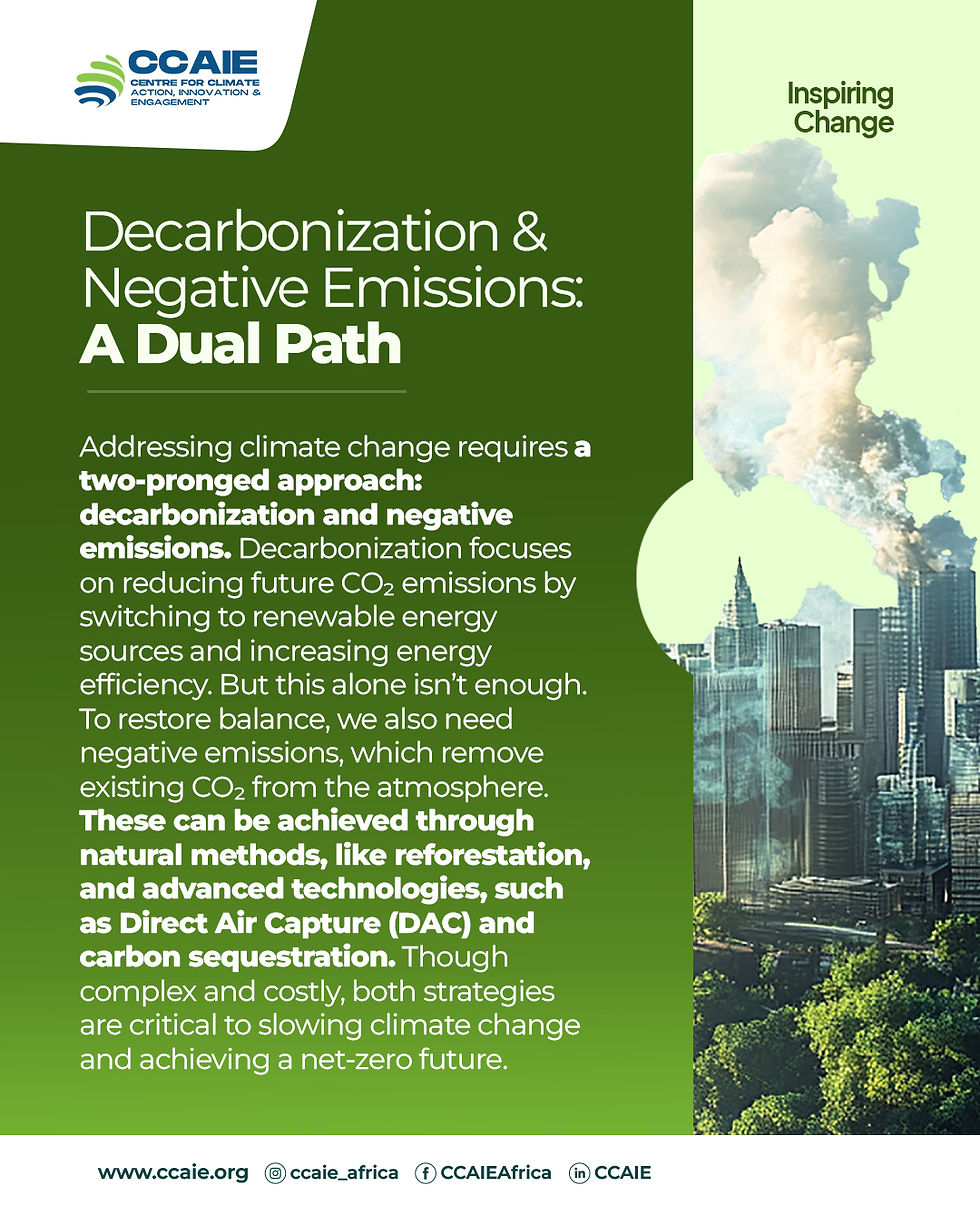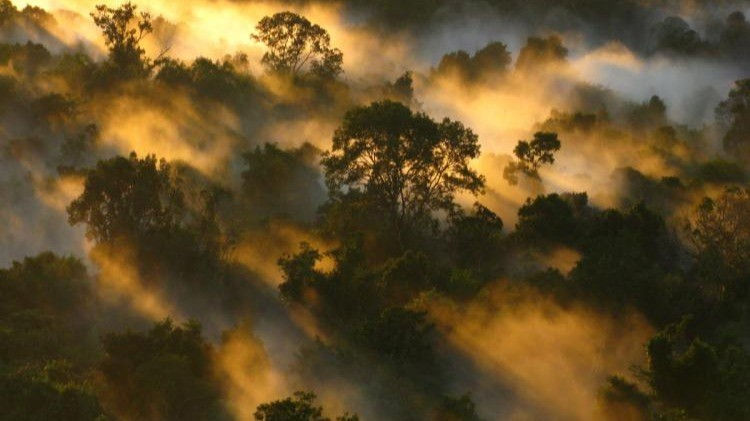Carbon’s Role in Climate and Life: Understanding the Carbon Cycle
- Aaron John
- Nov 25, 2024
- 3 min read
Carbon’s importance lies in its biological, ecological, and environmental roles. It’s the foundation of life, essential in climate regulation, central to energy transfer, and vital in both terrestrial and marine ecosystems. For millennia, the planet has delicately and efficiently balanced atmospheric carbon, sustaining life and ecosystems on Earth.
The Carbon Cycle Explained

The carbon cycle describes how carbon moves naturally between the atmosphere, oceans, soil, plants, and animals. This cycle is a global balancing act involving carbon sources (which release CO₂) and carbon sinks (which absorb CO₂), maintaining a relatively stable concentration of atmospheric CO₂.
Carbon Sources
Carbon enters the atmosphere primarily through natural processes, such as respiration by plants and animals, volcanic eruptions, and decomposition of organic matter. Fossil fuel combustion, a human activity, is now the largest source of atmospheric CO₂, releasing around 9.5 billion tons of carbon into the atmosphere each year. Natural carbon sinks can only absorb about half of this amount, with the rest remaining in the atmosphere, warming the planet and disrupting the natural carbon cycle.
Carbon Sinks
Natural systems like forests, oceans, and soils absorb and store carbon, acting as essential buffers. In the past, some of this carbon was permanently stored through a process that led to the formation of coal, crude oil, and natural gas deposits. As plants and organisms died, their carbon-rich remains were buried, compressed, and transformed under layers of sediment, storing carbon deep within the Earth’s crust for millions of years. Today, fossil fuel extraction and burning release this ancient carbon as CO₂ at a vastly accelerated rate, overwhelming natural carbon sinks and amplifying the greenhouse effect.
The Balance of Carbon
When carbon sources and sinks are in balance, CO₂ levels in the atmosphere remain stable, allowing Earth’s temperature to support ecosystems and human life. However, the current increase in CO₂ from fossil fuels overwhelms natural sinks, causing more CO₂ to remain in the atmosphere. This excess CO₂ intensifies the greenhouse effect, trapping more heat and leading to global warming.
Carbon Cycle Disruption and Climate Change
Rising temperatures weaken natural carbon sinks. Warmer oceans absorb less CO₂, reducing their buffering capacity, while forests under stress from droughts and extreme heat experience increased tree mortality, absorbing less carbon. This feedback loop allows more CO₂ to remain in the atmosphere, further amplifying climate change impacts.
As CO₂ levels rise, we see a shift in the natural carbon cycle:
Weakened Carbon Sinks: Warming oceans and stressed ecosystems are less effective at absorbing CO₂, which creates a feedback loop. For example, warmer temperatures may cause trees to die off, releasing stored carbon back into the atmosphere.
Feedback Loops: Melting permafrost releases methane, another potent greenhouse gas, and ocean acidification harms marine life that relies on carbonates to build shells. These effects further destabilize the carbon cycle.
Decarbonization and Negative Emissions: A Dual Path
To restore balance, we need a two-pronged approach: decarbonization (cutting future emissions) and negative emissions (actively removing existing CO₂). By adopting renewable energy and enhancing carbon sinks through reforestation and technologies like Direct Air Capture (DAC), we can mitigate some of the climate impacts. This approach is key to moving towards net zero—a state where emissions are balanced by removals.

Opportunity for Africa: A Leading Role in Climate Solutions
Africa’s landscapes and resources offer immense potential for reforestation, soil carbon storage, and expanding renewable energy. With only 4% of global CO₂ emissions, Africa can avoid high-emission development models and lead in sustainable industrialization. By embracing green solutions early, Africa can drive economic growth, create jobs, and establish itself as a global leader in climate resilience, shaping a sustainable, climate-secure future for the continent and beyond.
Why the Carbon Cycle Matters
The carbon cycle is the bedrock of climate stability. It controls how much CO₂ stays in the atmosphere, influencing global temperatures, weather patterns, and the health of ecosystems. Disruptions to this cycle threaten biodiversity, food security, and water availability, highlighting what’s at stake if we fail to restore balance.
In summary, understanding and protecting the carbon cycle is essential to addressing climate change. By reducing emissions and enhancing natural carbon sinks, we can work to stabilize the cycle, safeguarding the conditions necessary for life on Earth.
Now you know where terms like "decarbonation", "carbon-neutral", "net-zero" etc stem from.


Great